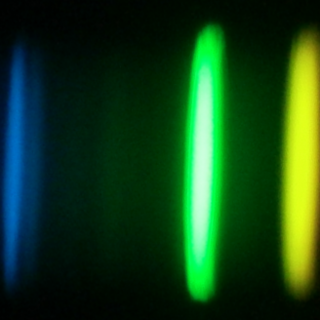Bibcode
Schlafly, Edward F.; Kirkby, David; Schlegel, David J.; Myers, Adam D.; Raichoor, Anand; Dawson, Kyle; Aguilar, Jessica; Allende Prieto, Carlos; Bailey, Stephen; BenZvi, Segev; Bermejo-Climent, Jose; Brooks, David; de la Macorra, Axel; Dey, Arjun; Doel, Peter; Fanning, Kevin; Font-Ribera, Andreu; Forero-Romero, Jaime E.; García-Bellido, Juan; Gontcho A Gontcho, Satya; Guy, Julien; Hahn, ChangHoon; Honscheid, Klaus; Ishak, Mustapha; Juneau, Stéphanie; Kehoe, Robert; Kisner, Theodore; Kremin, Anthony; Landriau, Martin; Lang, Dustin A.; Lasker, James; Levi, Michael E.; Magneville, Christophe; Manser, Christopher J.; Martini, Paul; Meisner, Aaron M.; Miquel, Ramon; Moustakas, John; Newman, Jeffrey A.; Nie, Jundan; Palanque-Delabrouille, Nathalie.; Percival, Will J.; Poppett, Claire; Rockosi, Constance; Ross, Ashley J.; Rossi, Graziano; Tarlé, Gregory; Weaver, Benjamin A.; Yèche, Christophe; Zhou, Rongpu; DESI Collaboration
Bibliographical reference
The Astronomical Journal
Advertised on:
12
2023
Citations
174
Refereed citations
128
Description
The Dark Energy Spectroscopic Instrument (DESI) survey is a spectroscopic survey of tens of millions of galaxies at 0 < z < 3.5 covering 14,000 sq. deg. of the sky. In its first 1.1 yr of survey operations, it has observed more than 14 million galaxies and 4 million stars. We describe the processes that govern DESI's observations of the 15,000 fields composing the survey. This includes the planning of each night's observations in the afternoon; automatic selection of fields to observe during the night; real-time assessment of field completeness on the basis of observing conditions during each exposure; reduction, redshifting, and quality assurance of each field of targets in the morning following observation; and updates to the list of future targets to observe on the basis of these results. We also compare the performance of the survey with historical expectations and find good agreement. Simulations of the weather and of DESI observations using the real field-selection algorithm show good agreement with the actual observations. After accounting for major unplanned shutdowns, the dark time survey is progressing about 7% faster than forecast, which is good agreement given approximations made in the simulations.
Related projects

Chemical Abundances in Stars
Stellar spectroscopy allows us to determine the properties and chemical compositions of stars. From this information for stars of different ages in the Milky Way, it is possible to reconstruct the chemical evolution of the Galaxy, as well as the origin of the elements heavier than boron, created mainly in stellar interiors. It is also possible to
Carlos
Allende Prieto